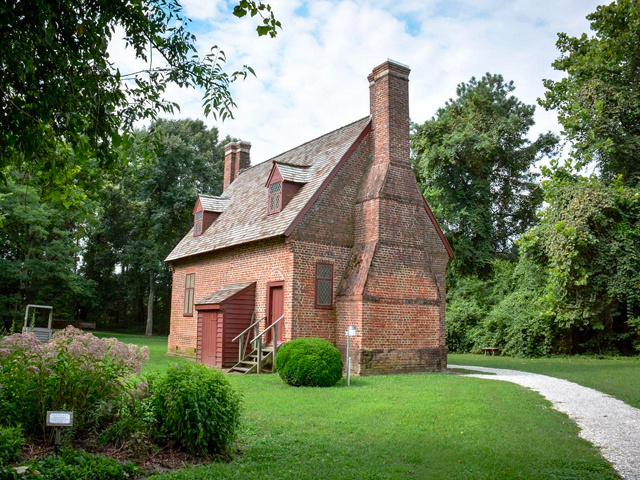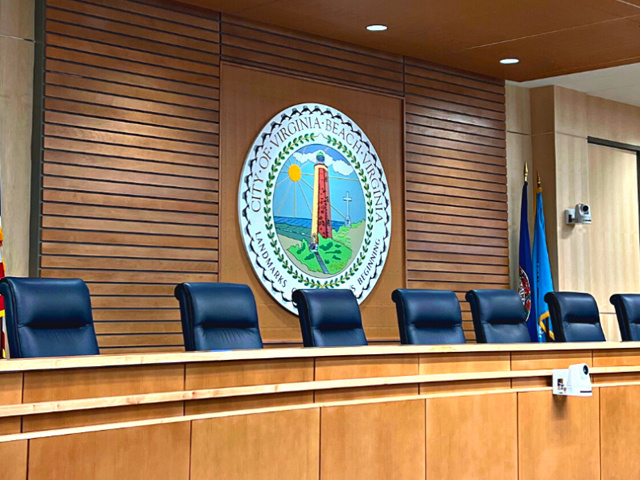Latest News
Woodhurst Neighborhood Historic District Listed in Virginia Landmarks Register
The Woodhurst neighborhood in Virginia Beach is now listed as a historic district in the Virginia Landmarks Register. The Virginia Board of Historic Resources voted to approve the nomination at its Dec. 8 meeting. Woodhurst is a post-World War II suburban development that was designed by the Norfolk architectural firm of Oliver and Smith in the contemporary or mid-century modern style. The historic district consists of 81 single-family homes. It is located across from the Cape Henry Collegiate School on Mill Dam Road, with internal streets of Indian Run Road, Strawberry Lane, Graham Road, and Woodhurst Drive.
The neighborhood was platted in 1955 by Frank Whitehurst and construction was completed by 1960. Although Woodhurst is one of many subdivisions platted in Princess Anne County, later the City of Virginia Beach, during a period of rapid residential expansion, it is the only neighborhood that features 100% of its homes designed and constructed in the contemporary style. Oliver and Smith designed four models for the neighborhood. The development comprises 21 examples of models 1, 2, and 3, and 18 examples of model 4. The various models were distributed consciously among the lots in the neighborhood with the result that no like models were built side by side.
The Woodhurst houses are built on concrete slabs and consist of wood-frame construction originally clad with brick veneer, weatherboard siding, and/or vertical wooden siding. Front-facing gable roofs unify the entire footprint of the house and are distinguished by their low slopes, deeply overhanging eaves, and very low side eave heights. Typical of the contemporary style, tall, broad interior brick chimneys project through the side slopes of the roofs. Depending on the model design, original windows were wood-frame, fixed clerestory types, metal-frame sliding windows with or without transoms, and fixed windows with lower awning panes. Each design offered in Woodhurst had three bedrooms, one or two bathrooms, and either an attached/integrated garage or, in the model 4 design, a carport. Many of the homes in Woodhurst are sited at an angle to the street rather than facing it.
In an interesting twist, a 1955 newspaper article noted that old bricks salvaged from buildings demolished for the construction of the Norfolk-Portsmouth (Downtown) tunnel were used in fireplaces and carport walls in some homes in the Woodhurst development. Despite the contemporary nature of the design, the old materials seem to fit well in this mid-century modern-style community. Interior features included vaulted ceilings with exposed beams, floor-to-ceiling brick fireplaces, Philippine mahogany paneling in living rooms, cork floor tiles in kitchens, and wooden parquet flooring in dining and living rooms,
Historic district nominations require architectural surveys of all resources in the district. The Woodhurst neighborhood survey forms and nomination were prepared by Debra McClane, Architectural Historian. The project was funded by the City of Virginia Beach through the Historic Preservation Commission. The nomination will be forwarded to the National Park Service for consideration for the listing of the Woodhurst Neighborhood Historic District in the National Register of Historic Places.

An example of the Model 2 design in the contemporary, mid-century modern Woodhurst Neighborhood Historic District, now listed in the Virginia Landmarks Register.
Contact Information
The Woodhurst neighborhood in Virginia Beach is now listed as a historic district in the Virginia Landmarks Register. The Virginia Board of Historic Resources voted to approve the nomination at its Dec. 8 meeting. Woodhurst is a post-World War II suburban development that was designed by the Norfolk architectural firm of Oliver and Smith in the contemporary or mid-century modern style. The historic district consists of 81 single-family homes. It is located across from the Cape Henry Collegiate School on Mill Dam Road, with internal streets of Indian Run Road, Strawberry Lane, Graham Road, and Woodhurst Drive.
The neighborhood was platted in 1955 by Frank Whitehurst and construction was completed by 1960. Although Woodhurst is one of many subdivisions platted in Princess Anne County, later the City of Virginia Beach, during a period of rapid residential expansion, it is the only neighborhood that features 100% of its homes designed and constructed in the contemporary style. Oliver and Smith designed four models for the neighborhood. The development comprises 21 examples of models 1, 2, and 3, and 18 examples of model 4. The various models were distributed consciously among the lots in the neighborhood with the result that no like models were built side by side.
The Woodhurst houses are built on concrete slabs and consist of wood-frame construction originally clad with brick veneer, weatherboard siding, and/or vertical wooden siding. Front-facing gable roofs unify the entire footprint of the house and are distinguished by their low slopes, deeply overhanging eaves, and very low side eave heights. Typical of the contemporary style, tall, broad interior brick chimneys project through the side slopes of the roofs. Depending on the model design, original windows were wood-frame, fixed clerestory types, metal-frame sliding windows with or without transoms, and fixed windows with lower awning panes. Each design offered in Woodhurst had three bedrooms, one or two bathrooms, and either an attached/integrated garage or, in the model 4 design, a carport. Many of the homes in Woodhurst are sited at an angle to the street rather than facing it.
In an interesting twist, a 1955 newspaper article noted that old bricks salvaged from buildings demolished for the construction of the Norfolk-Portsmouth (Downtown) tunnel were used in fireplaces and carport walls in some homes in the Woodhurst development. Despite the contemporary nature of the design, the old materials seem to fit well in this mid-century modern-style community. Interior features included vaulted ceilings with exposed beams, floor-to-ceiling brick fireplaces, Philippine mahogany paneling in living rooms, cork floor tiles in kitchens, and wooden parquet flooring in dining and living rooms,
Historic district nominations require architectural surveys of all resources in the district. The Woodhurst neighborhood survey forms and nomination were prepared by Debra McClane, Architectural Historian. The project was funded by the City of Virginia Beach through the Historic Preservation Commission. The nomination will be forwarded to the National Park Service for consideration for the listing of the Woodhurst Neighborhood Historic District in the National Register of Historic Places.

An example of the Model 2 design in the contemporary, mid-century modern Woodhurst Neighborhood Historic District, now listed in the Virginia Landmarks Register.
Contact Information
Keep Reading
See All PostsOctober 15, 2024
Virginia Beach Cultural Affairs Department Seeks Volunteer Review Panelists for New Arts Grants
October 15, 2024
Virginia Beach Announces New Grants for Individual Artists and Neighborhood Arts Initiatives
October 14, 2024
Members of the VA-TF2’s Mission Ready Package—Water Rescue Team are Returning to Hampton Roads Tuesday, Oct. 15, 2024
-
Calendar News Blog Hot Topics Multimedia Social Media Mobile Apps








